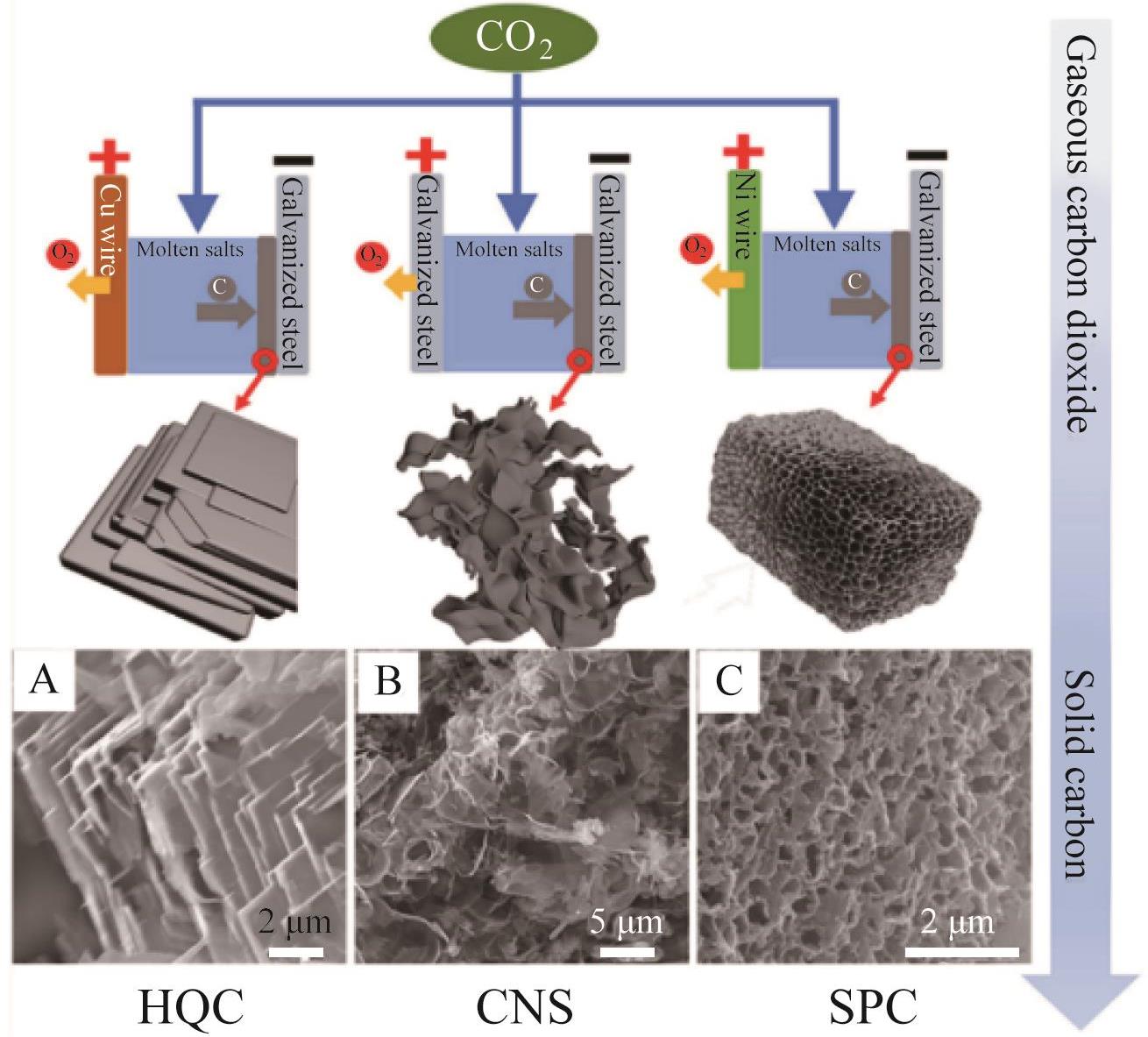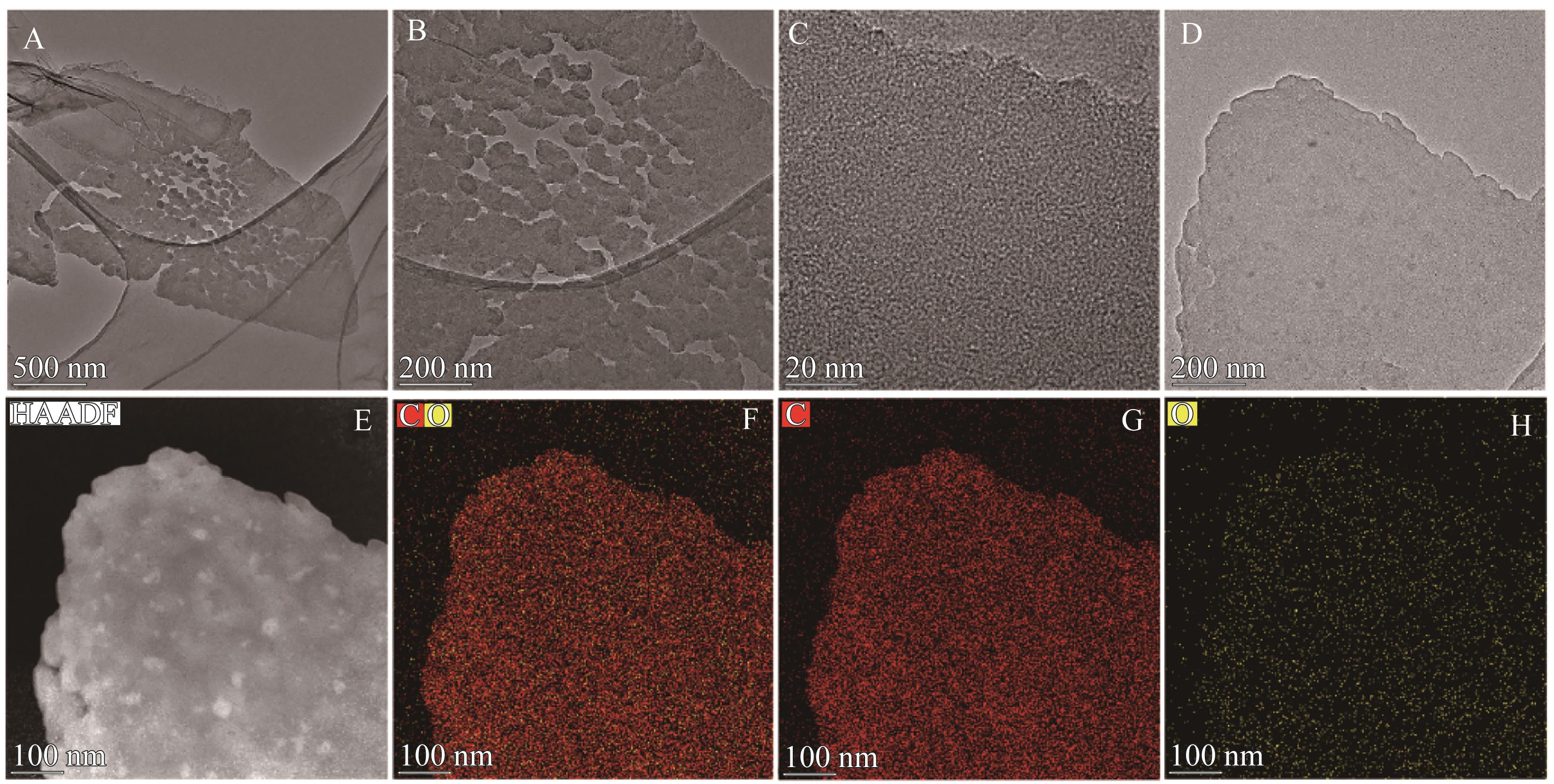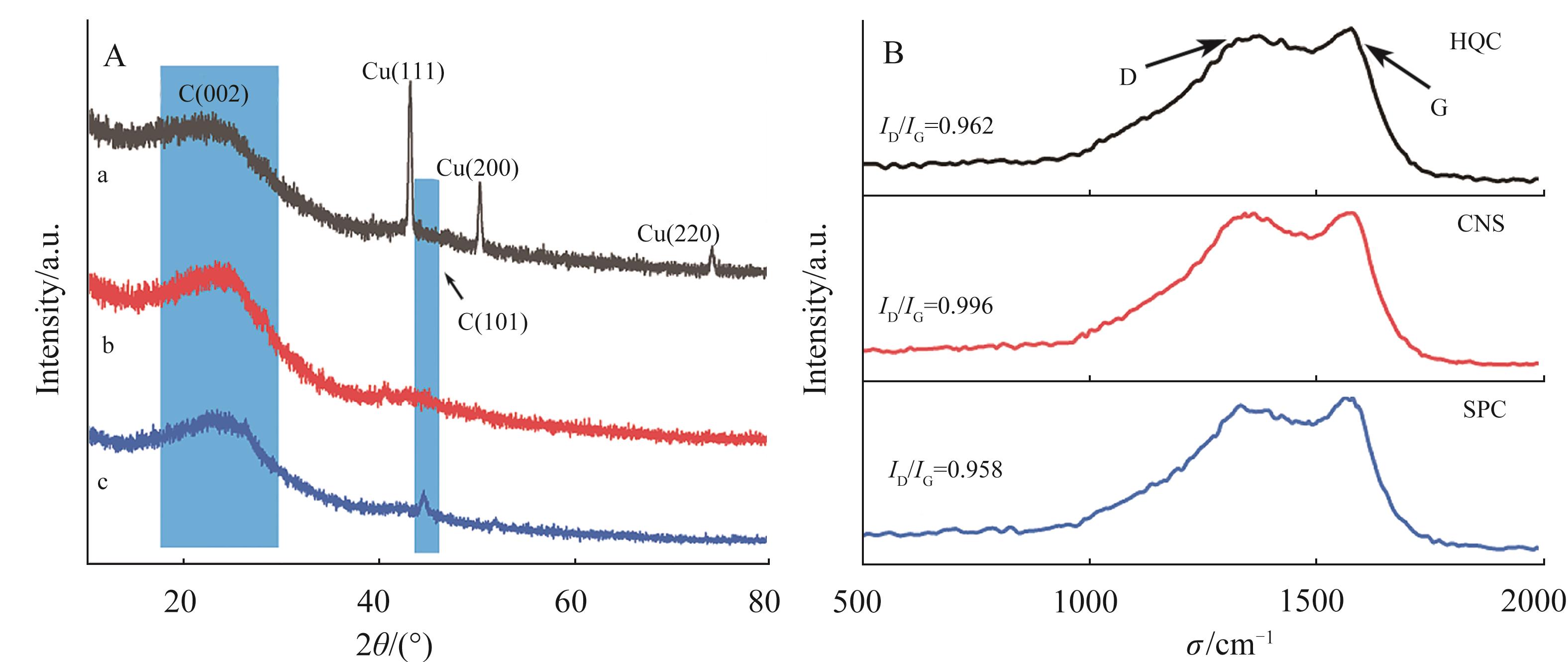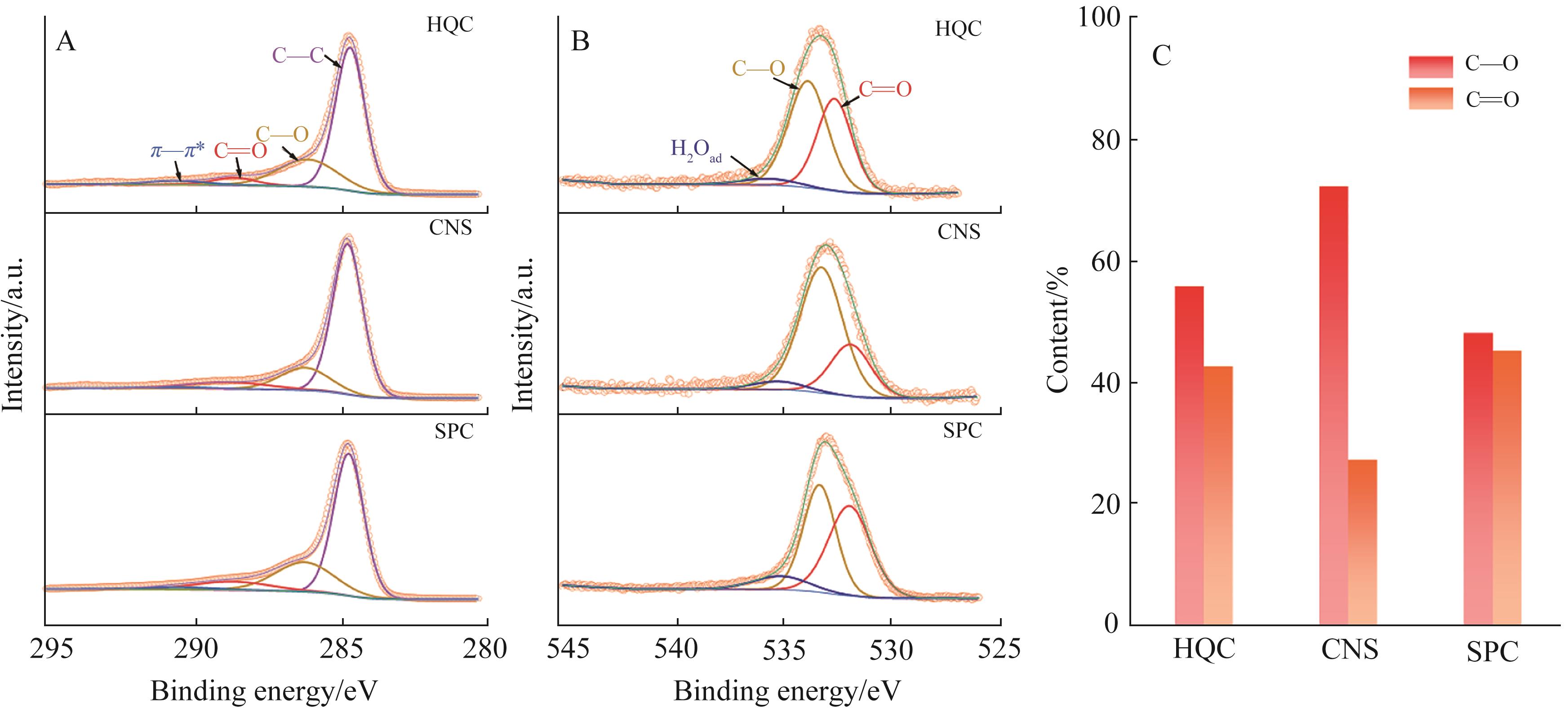
Chinese Journal of Applied Chemistry ›› 2022, Vol. 39 ›› Issue (4): 657-665.DOI: 10.19894/j.issn.1000-0518.210320
• Full Papers • Previous Articles Next Articles
Electrochemical Reduction of Carbon Dioxide to Carbon Materials for Two⁃Electron Oxygen Reduction Reaction
Ao YU, Guo-Ming MA, Long-Tao ZHU, Ping PENG( ), Fang-Fang LI(
), Fang-Fang LI( )
)
- State Key Laboratory of Materials Processing and Die & Mould Technology,School of Materials Science and Engineering,Huazhong University of Science and Technology,Wuhan 430074,China
-
Received:2021-06-30Accepted:2021-09-26Published:2022-04-01Online:2022-04-19 -
Contact:Ping PENG,Fang-Fang LI -
About author:ffli@hust.edu.cn
-
Supported by:the National Natural Science Foundation of China(21971077)
CLC Number:
Cite this article
Ao YU, Guo-Ming MA, Long-Tao ZHU, Ping PENG, Fang-Fang LI. Electrochemical Reduction of Carbon Dioxide to Carbon Materials for Two⁃Electron Oxygen Reduction Reaction[J]. Chinese Journal of Applied Chemistry, 2022, 39(4): 657-665.
share this article
Add to citation manager EndNote|Ris|BibTeX
URL: http://yyhx.ciac.jl.cn/EN/10.19894/j.issn.1000-0518.210320

Fig.5 (A - C) Cyclic voltammetry curves of HQC, CNS and SPC in N2 (a) and O2 (b) saturated 0.1 mol/L KOH solution, respectively; (D) Polarization curves of the catalysts at 1600 r/min (solid lines) and simultaneous H2O2 detection currents at the ring electrode (dashed lines), a, b and c represent the disk current of HQC, CNS and SPC, respectively; d, e and f represent the ring current of HQC, CNS and SPC, respectively; (E) Calculated selectivity of HQC (a), CNS (b) and SPC (c) at various potentials in 0.1 mol/L KOH; (F) Electron transfer numbers of HQC (a), CNS (b) and SPC (c) at various potentials in 0.1 mol/L KOH; (G) The catalytic stability of CNS, and the a and b represent the disc current and ring current, respectively; (H) Relationship between the average H2O2 selectivity and ID/IG values; (I) Relationship between the average H2O2 selectivity and the ratios of C—O/CO
| 1 | DONG K, LEI Y, ZHAO H, et al. Noble-metal-free electrocatalysts toward H2O2 production[J]. J Mater Chem A, 2020, 8(44): 23123-23141. |
| 2 | CHOI C H, KWON H C, YOOK S, et al. Hydrogen peroxide synthesis via enhanced twoelectron oxygen reduction pathway on carbon-coated Pt surface[J]. J Phys Chem C, 2014, 118(51): 30063-30070. |
| 3 | LU Y, JIANG Y, GAO X, et al. Charge state-dependent catalytic activity of [Au25(SC12H25)18] nanoclusters for the two-electron reduction of dioxygen to hydrogen peroxide[J]. Chem Commun, 2014, 50(62): 8464-8467. |
| 4 | SIAHROSTAMI S, VERDAGUER-CASADEVALL A, KARAMAD M, et al. Enabling direct H2O2 production through rational electrocatalyst design[J]. Nat Mater, 2013, 12(12): 1137-1143. |
| 5 | VERDAGUER-CASADEVALL A, DEIANA D, KARAMAD M, et al. Trends in the electrochemical synthesis of H2O2: enhancing activity and selectivity by electrocatalytic site engineering[J]. Nano Lett, 2014, 14(3): 1603-1608. |
| 6 | JIRKOVSKÝ J S, PANAS I, AHLBERG E, et al. Single atom hot-spots at Au-Pd nanoalloys for electrocatalytic H2O2 production[J]. J Am Chem Soc, 2011, 133(48): 19432-19441. |
| 7 | SHEN R G, CHEN W X, PENG Q, et al. High-concentration single atomic Pt sites on hollow CuSx for selective O2 reduction to H2O2 in acid solution[J]. Chem, 2019, 5(8): 2099-2110. |
| 8 | SAN ROMAN D, KRISHNAMURTHY D, GARG R, et al. Three-dimensional (3D) out-of-plane graphene edge sites for highly selective two-electron oxygen reduction electrocatalysis[J]. ACS Catal, 2020, 10(3): 1993-2008. |
| 9 | WANG X, JIA Y, MAO X, et al. A directional synthesis for topological defect in carbon[J]. Chem, 2020, 6(8): 2009-2023. |
| 10 | CHEN S, CHEN Z, SIAHROSTAMI S, et al. Defective carbon-based materials for the electrochemical synthesis of hydrogen peroxide[J]. ACS Sustainable Chem Eng, 2017, 6(1): 311-317. |
| 11 | WAKI K, WONG R A, OKTAVIANO H S, et al. Non-nitrogen doped and non-metal oxygen reduction electrocatalysts based on carbon nanotubes: mechanism and origin of ORR activity[J]. Energy Environ Sci, 2014, 7(6): 1950-1958. |
| 12 | LU Z Y, CHEN G X, SIAHROSTAMI S, et al. High-efficiency oxygen reduction to hydrogen peroxide catalysed by oxidized carbon materials[J]. Nat Catal, 2018, 1(2): 156-162. |
| 13 | ZHANG Q, TAN X, BEDFORD N M, et al. Direct insights into the role of epoxy groups on cobalt sites for acidic H2O2 production[J]. Nat Commun, 2020, 11(1): 4181. |
| 14 | PANG Y, WANG K, XIE H, et al. Mesoporous carbon hollow spheres as efficient electrocatalysts for oxygen reduction to hydrogen peroxide in neutral electrolytes[J]. ACS Catal, 2020, 10(14): 7434-7442. |
| 15 | HAN G F, LI F, ZOU W, et al. Building and identifying highly active oxygenated groups in carbon materials for oxygen reduction to H2O2[J]. Nat Commun, 2020, 11(1): 2209. |
| 16 | ZHU J, XIAO X, ZHENG K, et al. KOH-treated reduced graphene oxide: 100% selectivity for H2O2 electroproduction[J]. Carbon 2019, 153: 6-11. |
| 17 | SHINDE D B, DEBGUPTA J, KUSHWAHA A, et al. Electrochemical unzipping of multi-walled carbon nanotubes for facile synthesis of high-quality graphene nanoribbons[J]. J Am Chem Soc, 2011, 133(12): 4168-4171. |
| 18 | MA T Y, DAI S, JARONIEC M, et al. Graphitic carbon nitride nanosheet-carbon nanotube three-dimensional porous composites as high-performance oxygen evolution electrocatalysts[J]. Angew Chem Int Ed, 2014, 53(28): 7281-7285. |
| 19 | YU A, MA G, REN J, et al. Sustainable carbons and fuels: recent advances of CO2 conversion in molten salts[J]. ChemSusChem, 2020, 13(23): 6229-6245. |
| 20 | REN J, LICHT S. Tracking airborne CO2 mitigation and low cost transformation into valuable carbon nanotubes[J]. Sci Rep, 2016, 6(1): 27760. |
| 21 | LIU Y, QUAN X, FAN X, et al. High-yield electrosynthesis of hydrogen peroxide from oxygen reduction by hierarchically porous carbon[J]. Angew Chem Int Ed Engl, 2015, 54(23): 6837-6841. |
| 22 | CHEN Z, GU Y, HU L, et al. Synthesis of nanostructured graphite via molten salt reduction of CO2 and SO2 at a relatively low temperature[J]. J Mater Chem A, 2017, 5(39): 20603-20607. |
| 23 | HAN L, SUN Y Y, LI S, et al. In-plane carbon lattice-defect regulating electrochemical oxygen reduction to hydrogen peroxide production over nitrogen-doped graphene[J]. ACS Catal, 2019, 9(2): 1283-1288. |
| 24 | LI Z, GILLON X, DIALLO E, et al. A comparitive study of copolymerization by r.f inductively coupled plasma[J]. J Phys Conf Ser, 2011, 275: 012020. |
| 25 | YU A, MA G, JIANG J, et al. Bio-inspired and eco-friendly synthesis of 3D spongy meso-microporous carbons from CO2 for supercapacitors[J]. Chem Eur J, 2021, 27: 10405-1-412. |
| 26 | KIM H W, ROSS M B, KORNIENKO N, et al. Efficient hydrogen peroxide generation using reduced graphene oxide-based oxygen reduction electrocatalysts[J]. Nat Catal, 2018, 1(4): 282-290. |
| [1] | Feng ZHU, Xiao-Lian PENG, Wen-Bin ZHANG. Research Progress in the Effects of Proton Acceptor/Donor on Electrocatalytic Reactions [J]. Chinese Journal of Applied Chemistry, 2023, 40(5): 666-680. |
| [2] | Lian-Bo TANG, Da-You FU, Qi CHEN, Yang-Run FENG, Ya-Lin XIONG, Zhu-Qing WANG. Enhanced Gas⁃Liquid Chemiluminescence by Carbon Dots for Determination of Carbon Dioxide [J]. Chinese Journal of Applied Chemistry, 2022, 39(8): 1294-1302. |
| [3] | Zhi-Qiang QIAO, De-Qiang JI, Peng WANG, Ying-Ming HE, Zhi-Da LI, De-Bin JI, Hong-Jun WU. Progress in Preparation of Carbon Materials by Electrochemical Reduction of Carbon Dioxide in Molten Salt [J]. Chinese Journal of Applied Chemistry, 2022, 39(7): 1026-1038. |
| [4] | Xiao-Mei WANG, Jiang-Fei GUO, Li-Zhi WANG, Jian-Han HUANG. Porphyrin⁃Based Hyper⁃cross⁃Linked Polymer: Preparation and Adsorption of Carbon Dioxide and Hg(Ⅱ) Ion [J]. Chinese Journal of Applied Chemistry, 2022, 39(7): 1083-1089. |
| [5] | Lin-Jie SHANG, Jiang LIU, Ya-Qian LAN. Covalent Organic Framework Materials for Photo/ Electrocatalytic Carbon Dioxide Reduction [J]. Chinese Journal of Applied Chemistry, 2022, 39(4): 559-584. |
| [6] | Xue-Ting WU, Yang YU, Shu-Yan SONG, Hong-Jie ZHANG. Artificial Carbon Sequestration Technology—Research Progress on the Catalysts for Thermal Catalytic Reduction of CO2 [J]. Chinese Journal of Applied Chemistry, 2022, 39(4): 599-615. |
| [7] | Xiang-Zhi YE, Yun-Shui DENG, Yuan LIU, Yong-Liu ZHOU, Jian-Xiong HE, Chun-Rong XIONG. Glass Sphere Supported Amorphous Organotitanium Polymer to Improve the Turnover Frequency in Photocatalytic Reduction of CO2 [J]. Chinese Journal of Applied Chemistry, 2022, 39(10): 1554-1563. |
| [8] | LU Xin-Yu, MA Bin-Ze, LUO Hao, QI Huan, LI Qiang, WU Guang-Peng. Optimization of Development Process for Carbon Dioxide-Based Poly(cyclohexene carbonate) Electron Beam Resist [J]. Chinese Journal of Applied Chemistry, 2021, 38(9): 0-0. |
| [9] | LU Xin-Yu, MA Bin-Ze, LUO Hao, QI Huan, LI Qiang, WU Guang-Peng. Optimization of Development Process for Carbon Dioxide-Based Poly(cyclohexene carbonate) Electron Beam Resist [J]. Chinese Journal of Applied Chemistry, 2021, 38(9): 1189-1198. |
| [10] | ZHANG Shou-Cun, PI Mao. Effect of Monomer on Emulsification Behavior of Polyvinyl Alcohol and Preparation of Macroporous Materials [J]. Chinese Journal of Applied Chemistry, 2021, 38(1): 77-83. |
| [11] | SUN Li'na,LI Yan,GUO Hantao,HUANG Tingting,YAO Bixia,WENG Wen. Preparation of Nitrogen and Iron Co-doped Carbon Nanoparticles and Their Applications in Detection of Hydrogen Peroxide and Glucose [J]. Chinese Journal of Applied Chemistry, 2020, 37(3): 350-358. |
| [12] | GAO Jia, SONG Fujiao, CHENG Wenqiang, GE Yan, XU Qi. Catalytic Performance of Pd-Cu/ZrO2 Catalyst for Hydrogenation of Carbon Dioxide to Methanol [J]. Chinese Journal of Applied Chemistry, 2020, 37(2): 160-167. |
| [13] | LIU Junhui, SONG Yakun, SONG Chunshan, GUO Xinwen. Recent Advances in Application of Metal-Orgainic Framework-Derived Catalysts for Hydrogenation of Carbon Dioxide and Fischer-Tropsch Synthesis [J]. Chinese Journal of Applied Chemistry, 2020, 37(10): 1099-1111. |
| [14] | Xin SHI,Chuanzhi LIU,Ping GONG,wei LI,Yue HOU. Hydrogen Peroxide and Glucose Sensitive Colorimetric Method Based on Deuterohemin-Ala His Thr Val Glu Lys [J]. Chinese Journal of Applied Chemistry, 2019, 36(7): 847-854. |
| [15] | CAI Yi,GUO Hongchen,CAO Han,GAO Fengxiang,ZHOU Qinghai,WANG Xianhong. Synthesis and Properties of Ultraviolet-Irradiation Resistant Carbon Dioxide Copolymer [J]. Chinese Journal of Applied Chemistry, 2019, 36(11): 1248-1256. |
| Viewed | ||||||
|
Full text |
|
|||||
|
Abstract |
|
|||||



